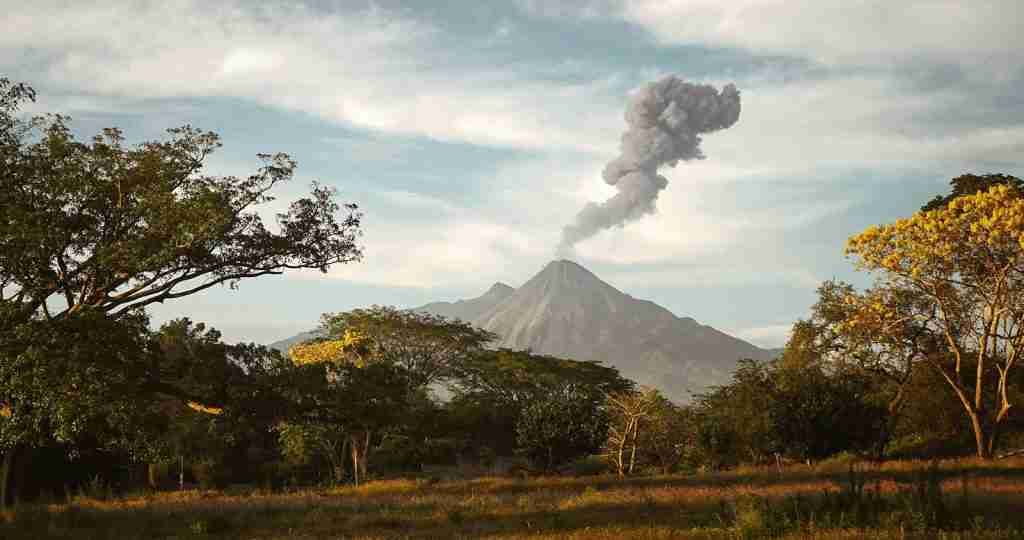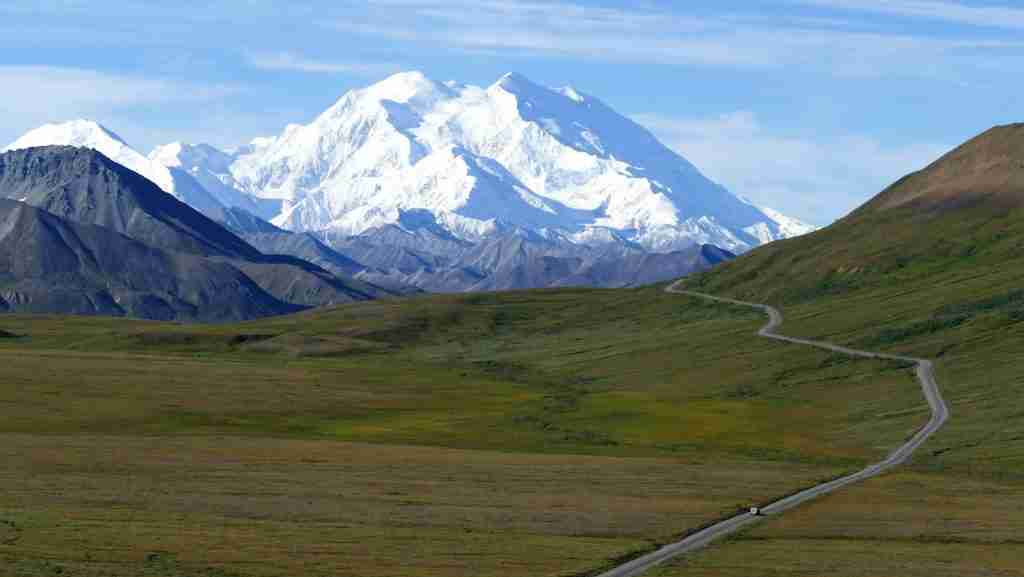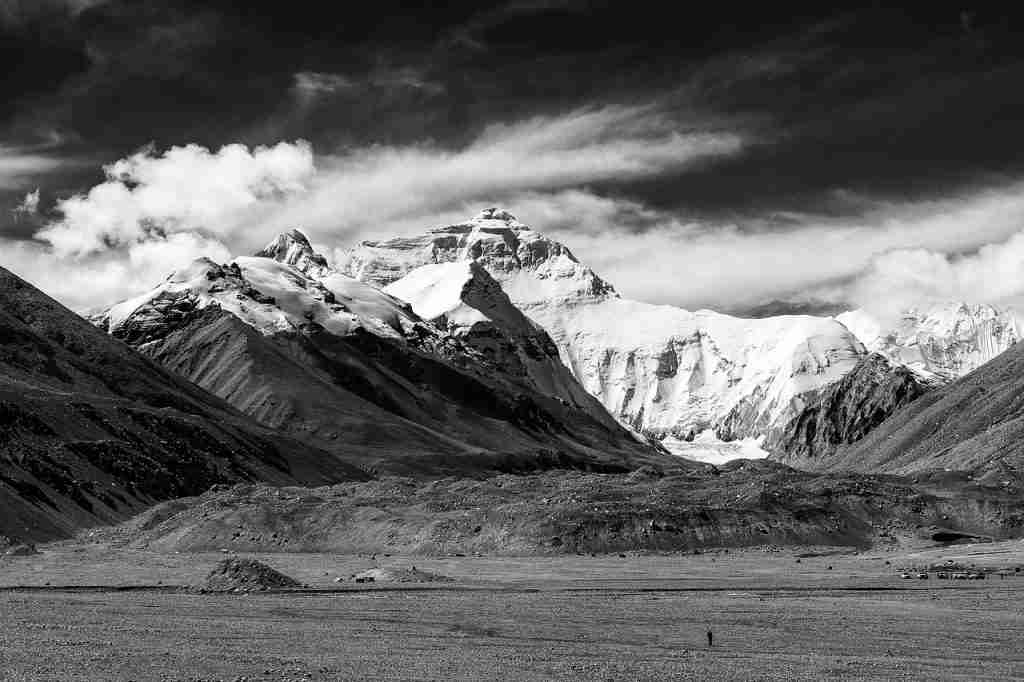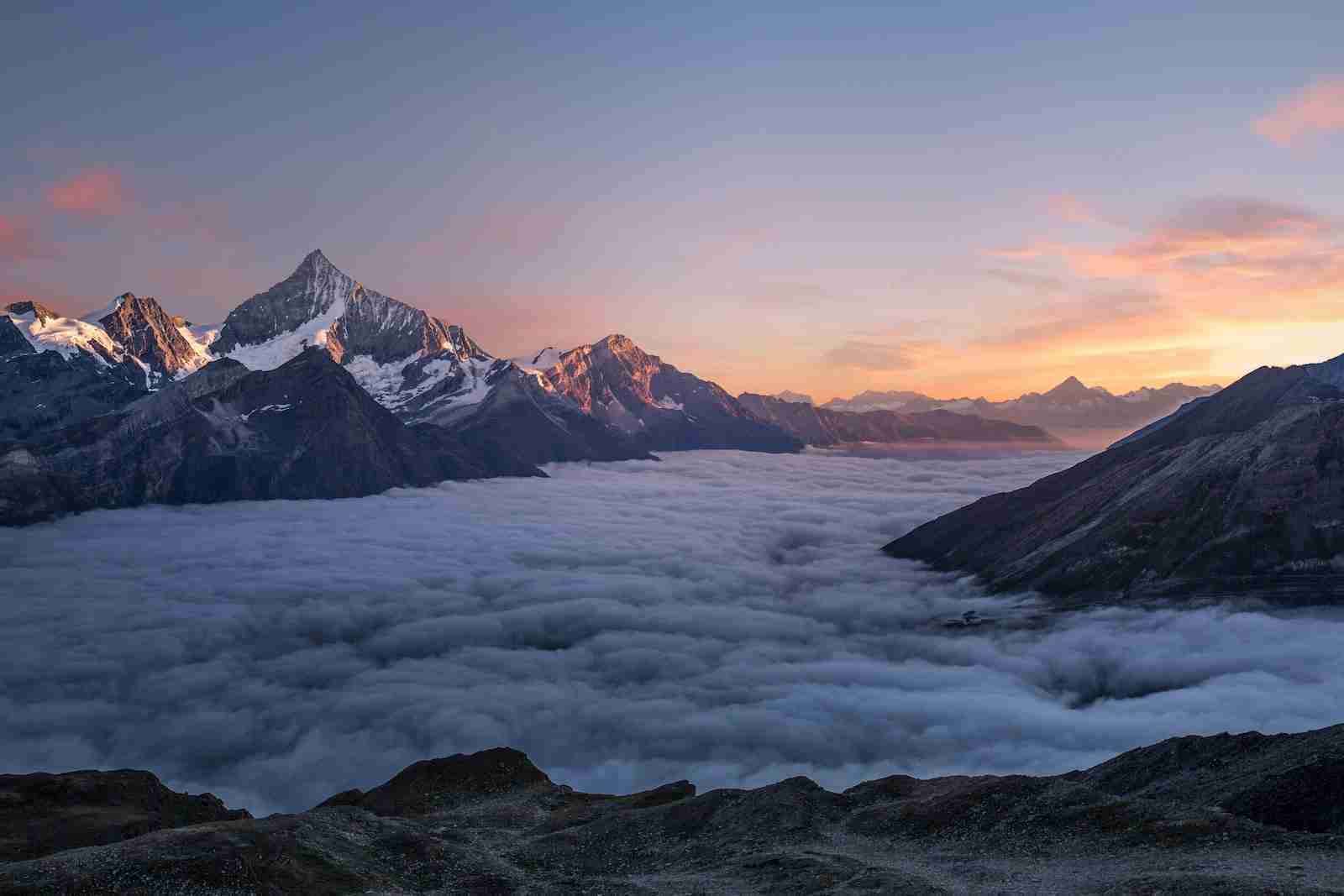23 Fun Facts About Mountains That Will Blow Your Mind
1. Mount Everest is tall, but Mauna Kea is the heaviest.
Mount Everest may be the tallest, but Mauna Kea packs more weight. The Hawaiian volcano may only reach 13,796 feet above sea level, but measured from its base on the ocean floor, it weighs in at 33,476 feet.
Mauna Kea is the true heavyweight champion of the mountain world.
2. Matterhorn is two rocks in one peak.
The Matterhorn appears to be a single peak, but two rocks are joined together. The North and South Face each offer unique climbing challenges and stunning views.
Remember, it’s not just one peak, it’s two peaks in one.
3. Mount Kilimanjaro has three climates in one mountain.
Mount Kilimanjaro may look like your average mountain, but it’s like a climate trifecta all in one! As you climb to the summit, you’ll experience three different climates: tropical, temperate, and arctic, each offering its unique flora and fauna.
It’s like taking a trip worldwide without ever leaving the mountain. So next time you’re thinking of climbing Kilimanjaro, remember that it’s not just one peak; it’s a world of climates in one.
4. What are the five most famous mountains?
Mount Everest: The highest mountain in the world, located in the Himalayas on the border of Nepal and Tibet, with an elevation of 8,848 meters (29,029 feet).
K2: The second-highest mountain in the world, located in the Karakoram range on the border of Pakistan and China, with an elevation of 8,611 meters (28,251 feet).
Kangchenjunga: The third highest mountain in the world, located in the Himalayas on the border of Nepal and India, with an elevation of 8,586 meters (28,169 feet).
Lhotse: The fourth highest mountain in the world, located in the Himalayas on the border of Nepal and Tibet, with an elevation of 8,516 meters (27,940 feet).
Makalu: The fifth-highest mountain in the world, located in the Himalayas on the border of Nepal and Tibet, with an elevation of 8,485 meters (27,838 feet).
5. Mount Rainier’s last eruption was 150 years ago.

Mount Rainier may seem like a peaceful giant, but don’t let its dormant exterior fool you. Its last eruption may have been 150 years ago, but it’s still a volcano that is considered potentially active.
It’s like a sleeping giant waiting to wake up any moment. So, next time you’re admiring the beauty of Mount Rainier, remember that it may have been a while since its last eruption, but it’s still a force to be reckoned with.
6. The Rocky Mountains are home to mountain goats.
The Rocky Mountains may be known for their rugged peaks and stunning vistas, but they’re also home to some serious climbers of their own: mountain goats!
These sure-footed creatures can be found scaling the steepest slopes and cliffs with ease, making them the ultimate mountaineers.
7. Mount St. Helens’ 1980 eruption killed 57 people.
Mount St. Helens may be a beautiful sight to behold, but don’t be fooled by its serene appearance; it’s a powerful force of nature that shouldn’t be underestimated.
Its eruption in 1980 was a reminder of its explosive potential, and it took 57 lives in the process. It’s like a ticking time bomb waiting for its next eruption.
8. Mount Denali has the coldest temperature ever recorded at -118F.

Mount Denali, also known as Mount McKinley, may be the tallest peak in North America, but it’s also the coldest place on Earth. With a temperature of -118F ever recorded, it’s like an arctic tundra on steroids.
If you’re considering climbing Mount Denali, remember to bring your thermal underwear and a lot of layers because it’s not just the height you have to worry about; it’s the freezing temperature, too.
9. Mont Blanc is the highest peak in Western Europe.
“Mont Blanc, with its impressive height as the highest peak in Western Europe, stands as the undisputed king of the Alps. The majestic summit of Mont Blanc, like a royal throne for the mountain gods, towers above the rest of the range.
When reflecting on the beauty of Mont Blanc, it’s essential to acknowledge that you’re not merely observing a mountain; you’re marvelling at the ruler of the Western European mountains – a true embodiment of the facts about the mountains in this magnificent region.
10. Mount Fuji last erupted in 1707.
Mount Fuji, the iconic symbol of Japan, may be a peaceful and beautiful sight to behold, but don’t let its dormant appearance fool you.
Its last eruption may have been in 1707, but that doesn’t mean it’s sleeping for good. It’s like a sleeping dragon waiting for the right moment to awaken and unleash its fiery fury again.
11. Mount Olympus is the highest peak in Greece.
Mount Olympus is the highest peak in Greece, with an elevation of 9,570 feet (2,917 meters), and is part of the Olympus Range.
It is a popular destination for hikers and climbers and is also home to a diverse range of flora and fauna. It is also a UNESCO Biosphere Reserve.
12. What are the 5 basic mountains?
The five basic types of mountains are:
Fold Mountains: Formed by the collision of tectonic plates and the upward folding of rock layers.
Volcanic Mountains: Formed by volcanic activity and the accumulation of lava and ash.
Block Mountains: Formed by faults in the Earth’s crust, leading to the uplift and tilting of large blocks of rock.
Dome Mountains: Formed by the uplift and doming of the Earth’s surface due to magma intrusion.
Plateau Mountains: Formed by the uplift and erosion of a large, flat land area.
13. Mount Elbrus is the highest peak in Europe.
Mount Elbrus is the highest peak in Europe, with an elevation of 18,510 feet (5,642 meters) located in the Caucasus Mountains, on the border of Russia and Georgia.
It is an active volcano and a popular destination for hikers and mountaineers, with several routes leading to the summit. It’s also a part of the Caucasus Nature Reserve, a UNESCO World Heritage site.
14. Mount Everest has four names in different languages.
Mount Everest, the highest peak in the world, has four different names: Sagarmatha in Nepal, Chomolungma in Tibet, Qomolangma in China, and “Everest” in the Western world.
Named after Sir George Everest, a British Surveyor-General of India, and officially adopted by the Royal Geographical Society in 1865.
It’s located on the border of Nepal and Tibet and is a major attraction for mountaineers, climbers, and trekkers worldwide.
15. The Matterhorn was first climbed in 1865.
The Matterhorn, located in the western Alps, was first climbed on July 14, 1865, by a team led by Edward Whymper. The expedition was not without its challenges and marked a turning point in the sport of mountaineering.
It’s still a popular destination for mountaineers, hikers, and skiers worldwide, but it’s considered difficult and requires proper equipment, experience, and acclimatization due to the high altitude.
16. Mount Rainier was named after a British officer.
Mount Rainier, located in Washington, USA, is named after British officer Peter Rainier, who served in the Royal Navy during the late 1700s.
He never visited the area, but American explorer George Vancouver gave him his name to the mountain in 1792. It’s considered one of the most dangerous volcanoes in the US and a popular destination for hikers, climbers, and skiers.
It’s also surrounded by the most visited national park in Washington State.
17. Mount Denali means “The High One” in Athabascan.
Mount Denali, located in Alaska, USA, is the highest peak in North America. Its name “Denali” means “The High One” in Athabascan, the language of the indigenous people.
It’s a popular destination for mountaineers, hikers, and skiers and is considered one of the Seven Summits.
Climbing Denali is difficult and requires proper equipment, experience, and acclimatization due to the high altitude, remote location, and extreme weather conditions.
18. Mount Fuji is a symbol of Japan.
Mount Fuji, located in Japan, is the highest mountain in Japan at 12,388 feet and is considered a symbol of Japan and a sacred site.
It’s a popular destination for hikers and climbers and a UNESCO World Heritage Site; it also has cultural and religious significance. It is considered a pilgrimage site for many Japanese people to reach the summit to view the sunrise and sunset.
19. Mount Kosciuszko was named after a Polish general.
Mount Kosciuszko, located in New South Wales, Australia, is the highest peak on the Australian mainland. It was named after Tadeusz Kosciuszko, a Polish general and national hero.
The mountain was named by the Polish explorer Paul Strzelecki, who was the first European to summit the mountain in 1840. It’s surrounded by Kosciuszko National Park, known for its alpine wilderness and unique flora and fauna.
20. Mount Everest’s summit is moving.

Mount Everest’s summit is moving slowly but surely. It’s taking a stroll across the Himalayas. It’s summit maybe somewhere else by the time you reach it. Climbing Mount Everest is like chasing a moving target.
21. Mount Kosciuszko is the tallest peak in Australia.
Mount Kosciuszko is the highest peak in mainland Australia, with an elevation of 7,310 feet (2,228 meters). It is located in the Snowy Mountains of New South Wales and is part of the Kosciuszko National Park.
The mountain is popular for hikers and outdoor enthusiasts, with several trails leading to the summit.
22. What is a mountain?
A mountain is a large landform that rises prominently above its surroundings, typically reaching an elevation of at least 1,000 meters (3,281 feet). Mountains are formed through tectonic processes, where Earth’s plates either collide, causing uplift, or pull apart, creating volcanic activity and uplift.
Mountains are important. They act as water towers, providing fresh water to rivers and valleys. Mountains are biodiversity hotspots, hosting unique ecosystems and species. They offer recreational opportunities, contribute to climate regulation, and hold cultural significance for many communities.
23. The Barberton Greenstone Belt is over 3.5 billion years old.
The Barberton Mountains, also called the Makhonjwa Mountains, stand as the Earth’s oldest mountain range. Nestled in South Africa, these mountains are composed of rocks from the Barberton Greenstone Belt, a geological formation dating back an astounding 3.5 billion years.
The Barberton Greenstone Belt boasts ancient rocks and preserves a rich record of Earth’s early history, offering insights into the planet’s geological evolution over billions of years.
FAQS
It is subjective to say which mountain is the “prettiest” in the world as beauty is in the eye of the beholder. Different people have different preferences, and what one person finds beautiful, another person may not. But some of the most visually stunning mountains in the world are:
Matterhorn: Located in the Swiss Alps, it is one of the most iconic peaks in the world, known for its symmetrical pyramid shape.
Mount Fuji: located in Japan, is a symmetrical stratovolcano known for its elegance and serene beauty.
Denali: located in Alaska, USA, formerly known as Mount McKinley, is the highest peak in North America, and its snow-capped peak can be seen from miles away.
Aoraki/Mount Cook: located in New Zealand, is the highest peak in New Zealand and its glaciers and ice-covered peaks make it a picturesque sight.
Table Mountain: located in South Africa, is a flat-topped mountain that stands out from the surrounding landscape and offers spectacular views of Cape Town and the surrounding area.
The main mountain range in Georgia is the Blue Ridge Mountains, which runs along the border between Georgia and North Carolina. Other notable mountain ranges in Georgia include the Appalachian and Cohutta Mountains.
Some notable mountains in Colorado include:
The Rocky Mountains, run through much of Colorado and include several peaks over 14,000 feet, such as Mount Elbert, Mount Massive, and Quandary Peak.
Pikes Peak is one of the most famous mountains in Colorado and stands at 14,114 feet.
Mount Evans reaches an elevation of 14,264 feet and is the highest peak in the Front Range.
Longs Peak, which is a fourteener in the Front Range and stands at 14,259 feet.
Grays Peak, which is a fourteener in the Front Range and stands at 14,270 feet.
Torreys Peak, which is a fourteener in the Front Range and stands at 14,267 feet.
La Plata Peak is the fifth-highest peak in Colorado and stands at 14,336 feet.
Some notable mountains in California include:
Mount Whitney is the highest peak in the contiguous United States and stands at 14,505 feet.
Mount Shasta is a potentially active volcano and stands at 14,179 feet.
Mount Lassen is also a potentially active volcano and stands at 10,457 feet.
Mount San Jacinto stands at 10,834 feet and is part of the San Jacinto Mountains.
Mount San Gorgonio stands at 11,503 feet and is the highest peak in the San Bernardino Mountains.
Mount San Antonio, which is also known as Mount Baldy and stands at 10,064 feet, is the highest peak in the San Gabriel Mountains.
Mount Tamalpais, which stands at 2,571 feet, and is located in the northern part of the Bay Area, is a popular spot for hiking and outdoor recreation.







